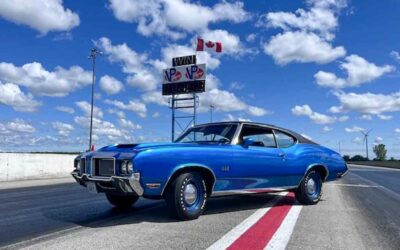Written by Blaine Lawrence
CAIB, Branch Manager, Waterloo
Zehr Insurance Brokers Ltd.
Why do insurance prices change so much for different cars?
How much will your insurance cost for a new car?
For many people the cost of insurance is an important consideration. Most folks are aware that auto insurance rates are significantly affected by factors including your age, driving experience and habits, vehicle use, insurance history and how much coverage you want. These are important factors that are unique to each person but how will that person’s insurance cost be affected when comparing the cost of insurance for one vehicle to the next? The answer, this cost can differ significantly. Even vehicles of similar type and value can generate very different insurance premiums.
What is the best way to get pricing?
You might ask friends with similar vehicles or people working in related business that are outside the insurance industry but pricing you get will reflect their cost or their perception of what the cost might be but does not consider the factors that are unique to you. The best source is an insurance professional. Your current
insurance professional already has your unique profile and can compare different vehicles for you. If you do not have automobile insurance, an insurance broker will obtain the required information from you to complete your driving profile and compare pricing from several different insurance companies to find the best options they can provide for you.
How do insurance companies determine rates specific for each year, make and model of private passenger vehicle?
In Ontario, companies use a system that was developed by the ”Vehicle Information Centre of Canada” or VICC. This system is referred to as CLEAR, which stands for “Canadian Loss Experience Automobile Rating”. According to the Insurance Bureau of Canada (IBC), the CLEAR rating system is defined as “an accurate and credible assessment of the expected and actual claims loss experience for each make, model and model-year of private passenger vehicle. The objective is to predict future claims costs as a tool to provide fairly priced insurance cost for vehicles that experience fewer claims and smaller losses. This takes in to consideration factors like vehicles equipped with advanced safety and anti-theft features.
There are some vehicles that fall outside the CLEAR rating system, for example significantly modified vehicles and vintage collector vehicles which are rated based much more heavily on vehicle value.
How does CLEAR work?
It is a numerical rating system that assigns numbers to 4 coverage categories which are Direct Compensation for Property Damage (DCPD), Accident Benefits, Collision and Comprehensive. This information is included in the rating section of your automobile insurance policy and we refer to these numbers as “Rate Groups”.
Rate Groups are vehicle specific for each year, make and model (including trim packages and upgrades). Rate groups are not postal code specific but are affected by factors like the MSRP, performance features, safety features and parts availability but there is more to this system. Data is collected from varieties of claims that have happened across Canada and how much they cost.
This information is analyzed to determine average claim costs and then applied to specific year make and model of vehicle to indicate it’s performance compared to average.
This data is provided to insurance companies from the IBC and GAA (Groupement des assureurs automobiles). Lower rate group numbers generate a lower insurance cost. Information is continuously collected, analyzed and typically updated on an annual basis. These numbers can change from one year to the next for a vehicle, influenced by factors like aging, depreciation and increased or decreased claims frequency or costs.
Also, it’s not uncommon that when a vehicle manufacturer introduces a new model year, there may not be enough data collected for that vehicle to obtains accurately it’s unique rate group numbers. In these cases, insurance companies may use rate groups from the previous model year and/or information already obtained for similar models. Because rate groups impact your insurance cost and can change from one year to the next, your insurance cost can change from one renewal to the next even if your driving profile hasn’t changed and you have not had any accidents nor made any claims.
Things to consider when comparing vehicles and insurance cost.
Since there are many factors affecting cost of insurance for each vehicle, a lower priced vehicle may generate a higher insurance cost that a different vehicle with ahigher purchase price or of course the other way around too. Even when considering vehicles of similar styles and purchase price, it’s best not to assume the insurance cost would be the same.
I recall one time a client who wanted to go shopping with a list of vehicle rate groups from the insurance company and asked if I could provide a hard copy. It’s a big list and would have been over 400 pages long. I suggested they have fun car shopping and decide which vehicle they really wanted or narrow the list down to a few vehicles and contact me for price and coverage specifics. It works great.
Because the Vehicle Rate group list is long and detailed, it is very helpful if you can provide your insurance professional with the VIN number of the vehicle you want pricing for, or in absence of that, the year, make model and specific trim package you’re interested in.







